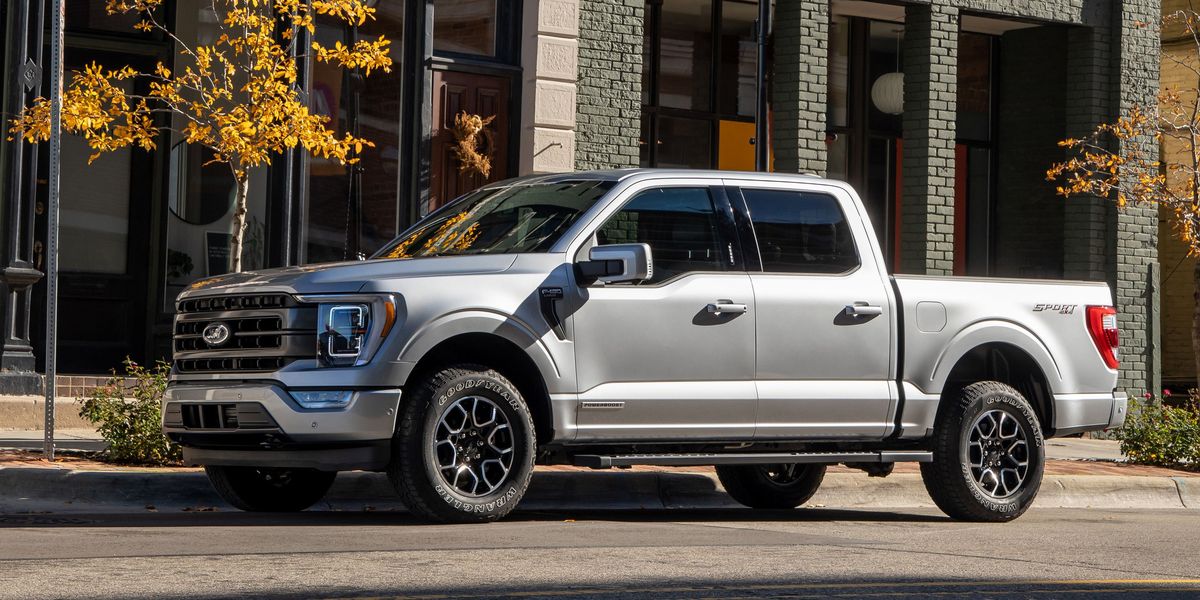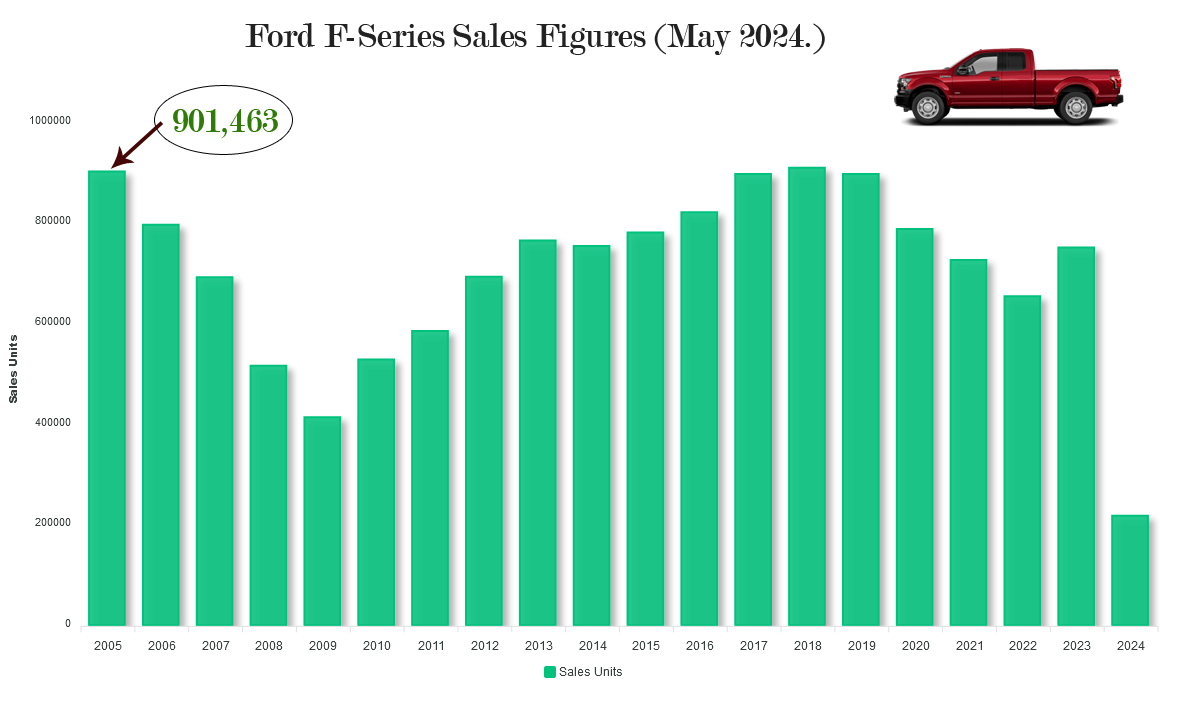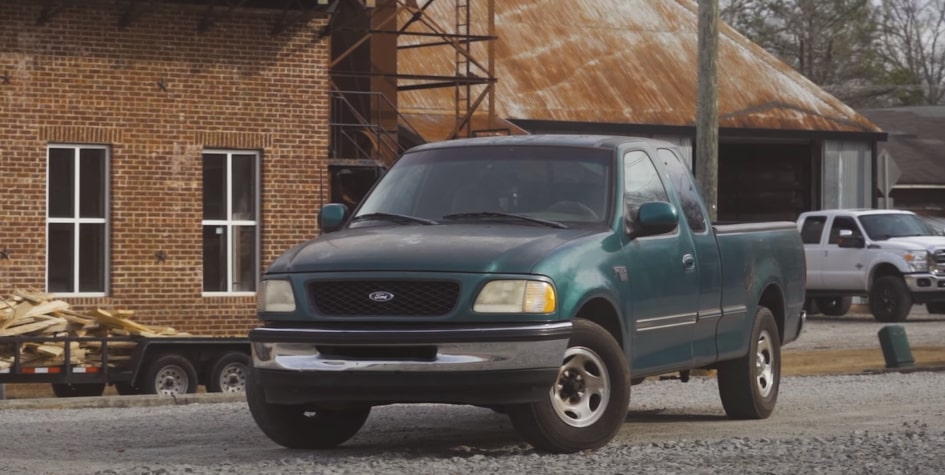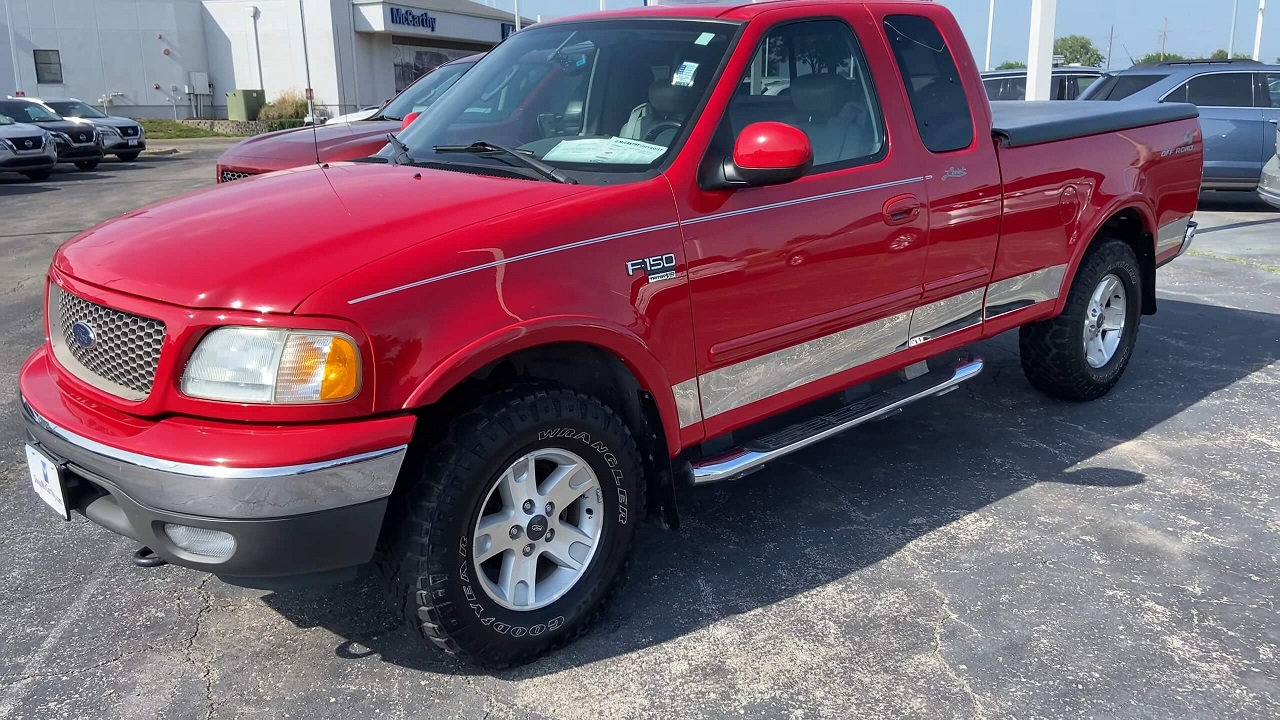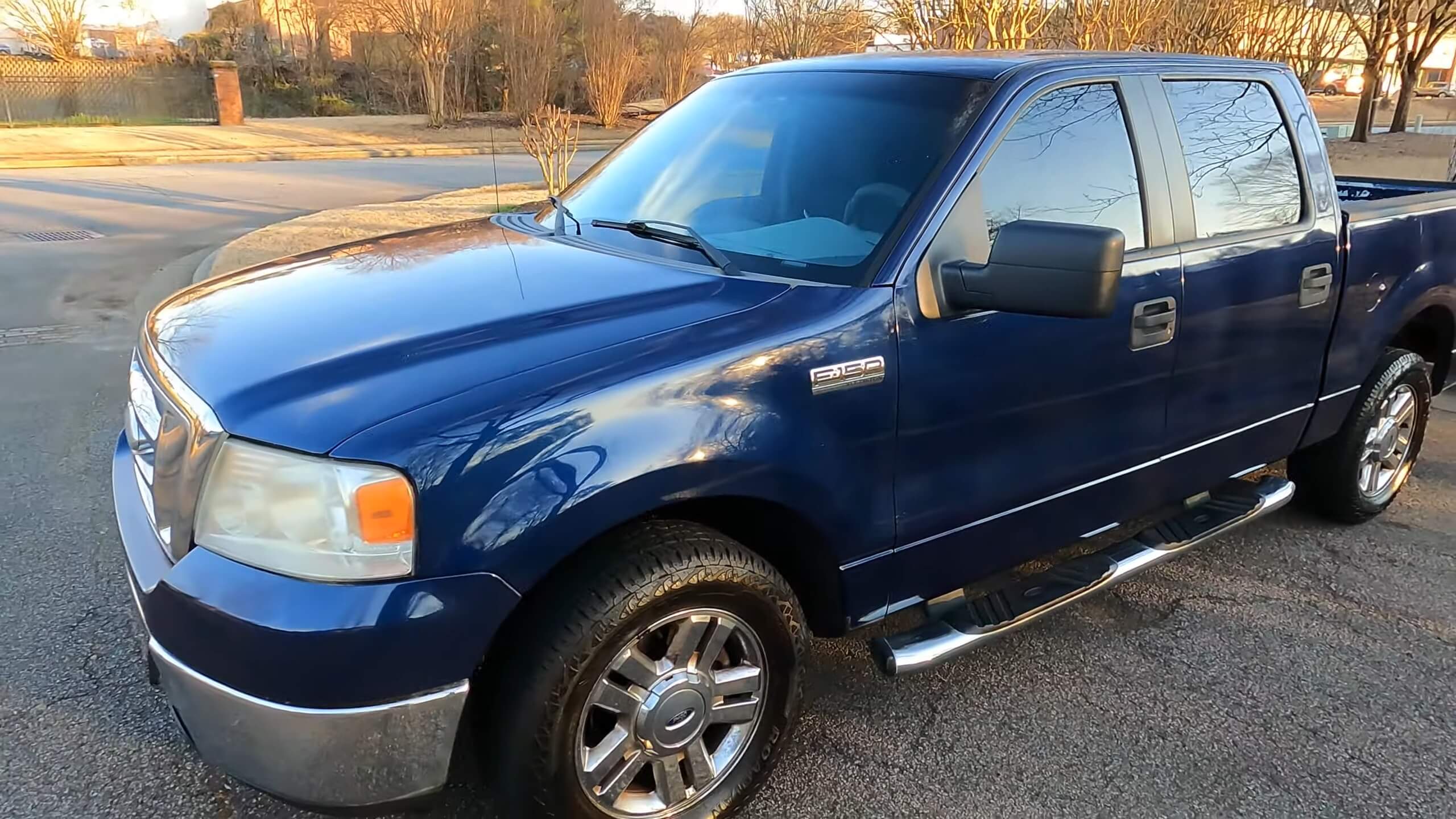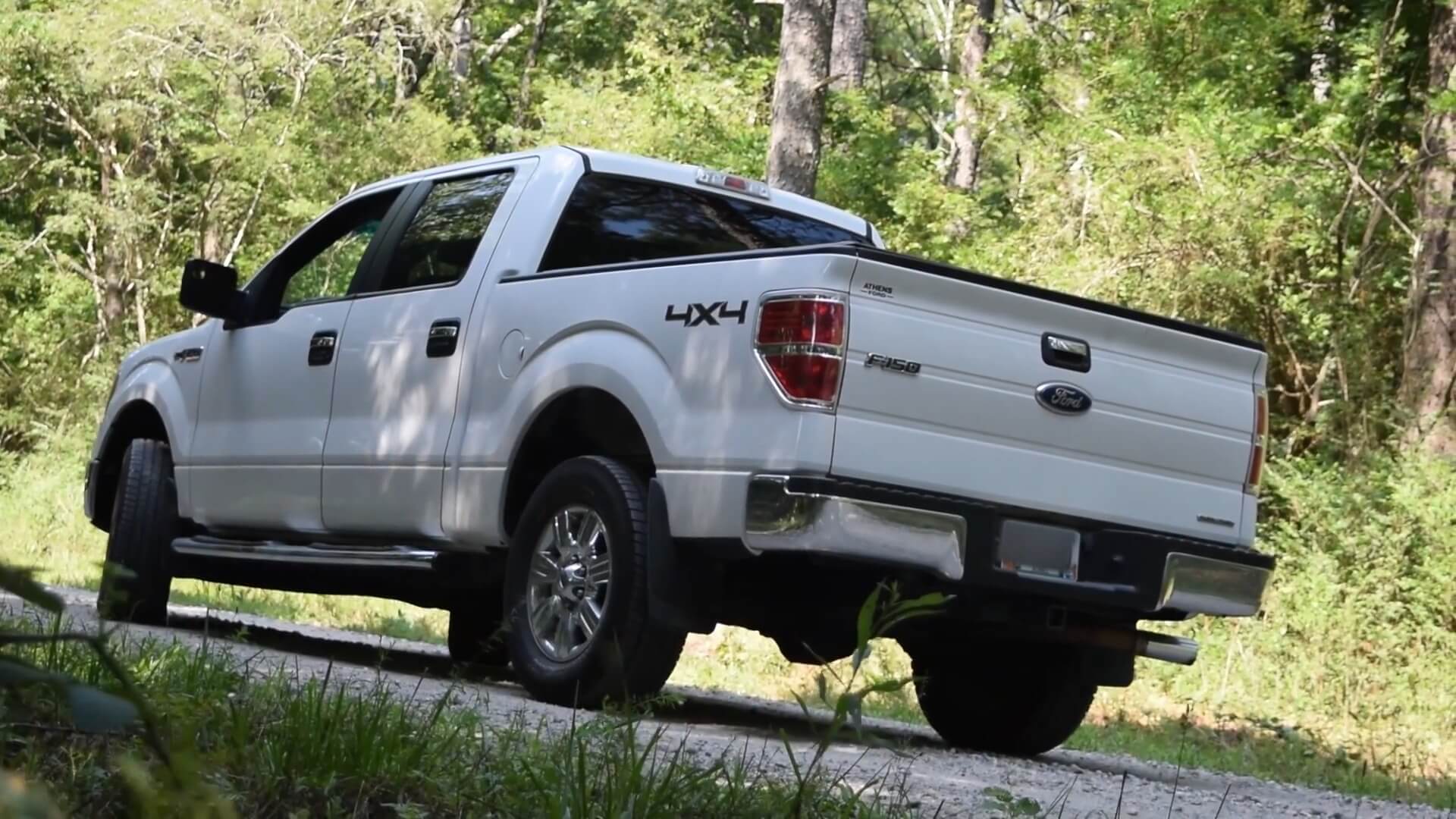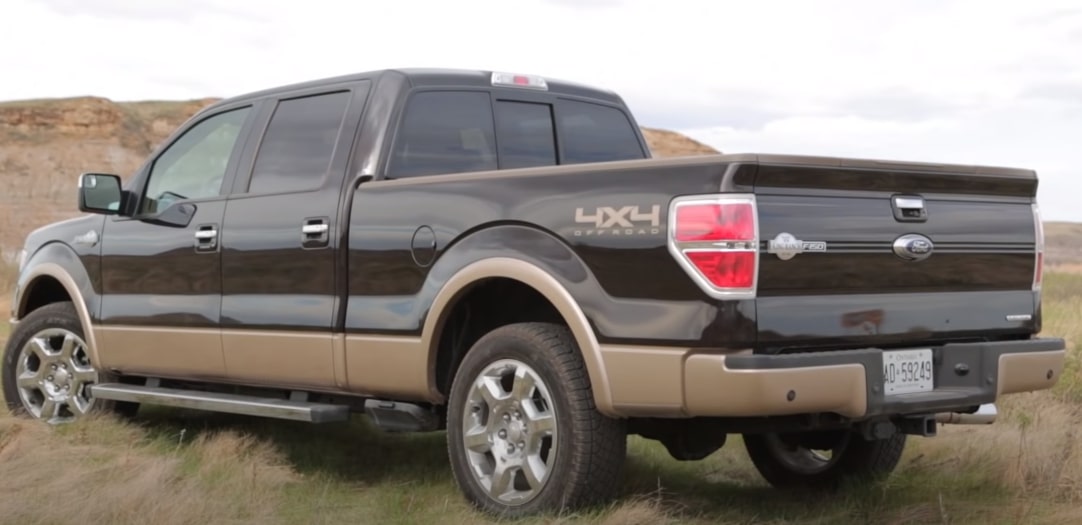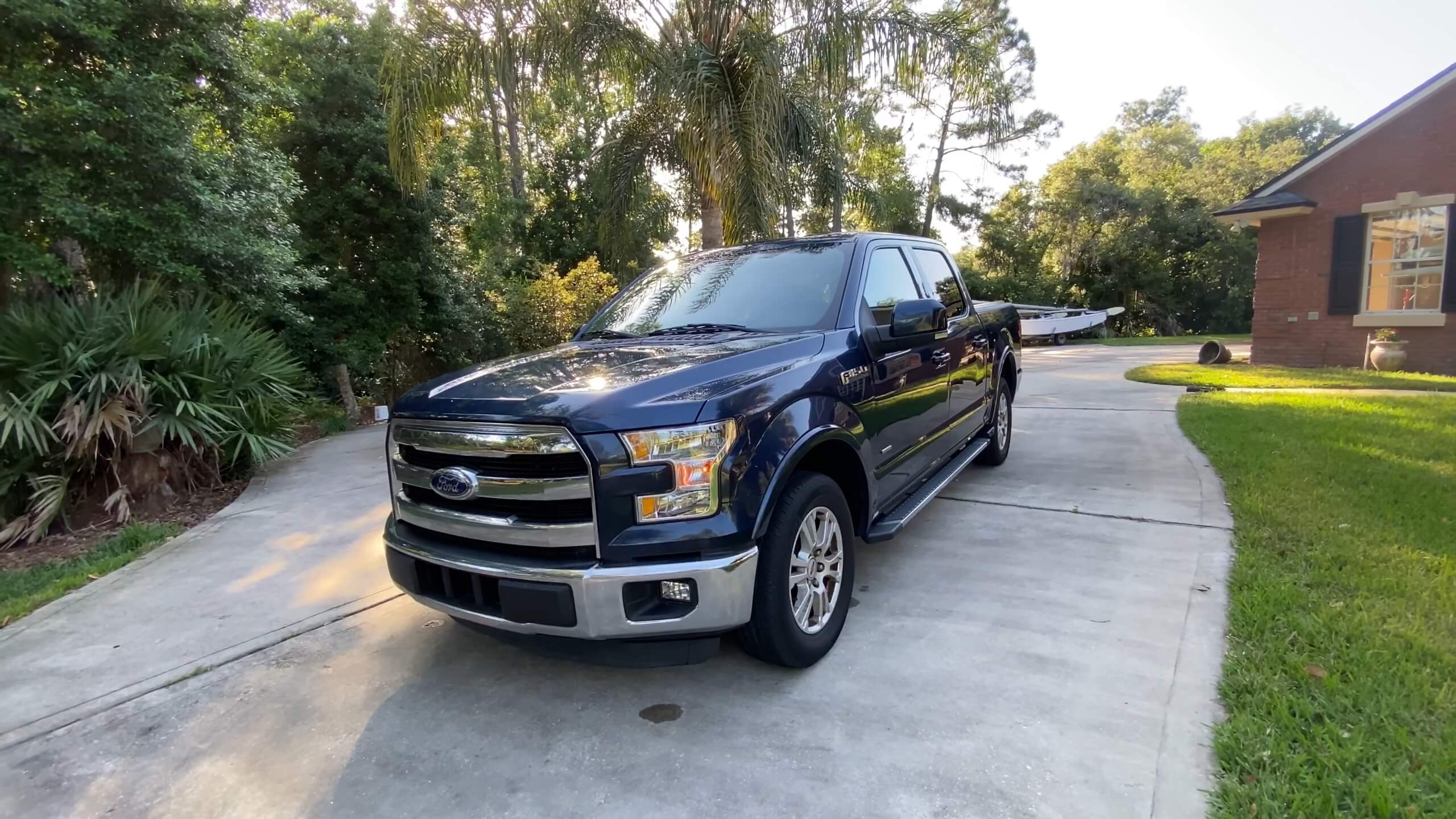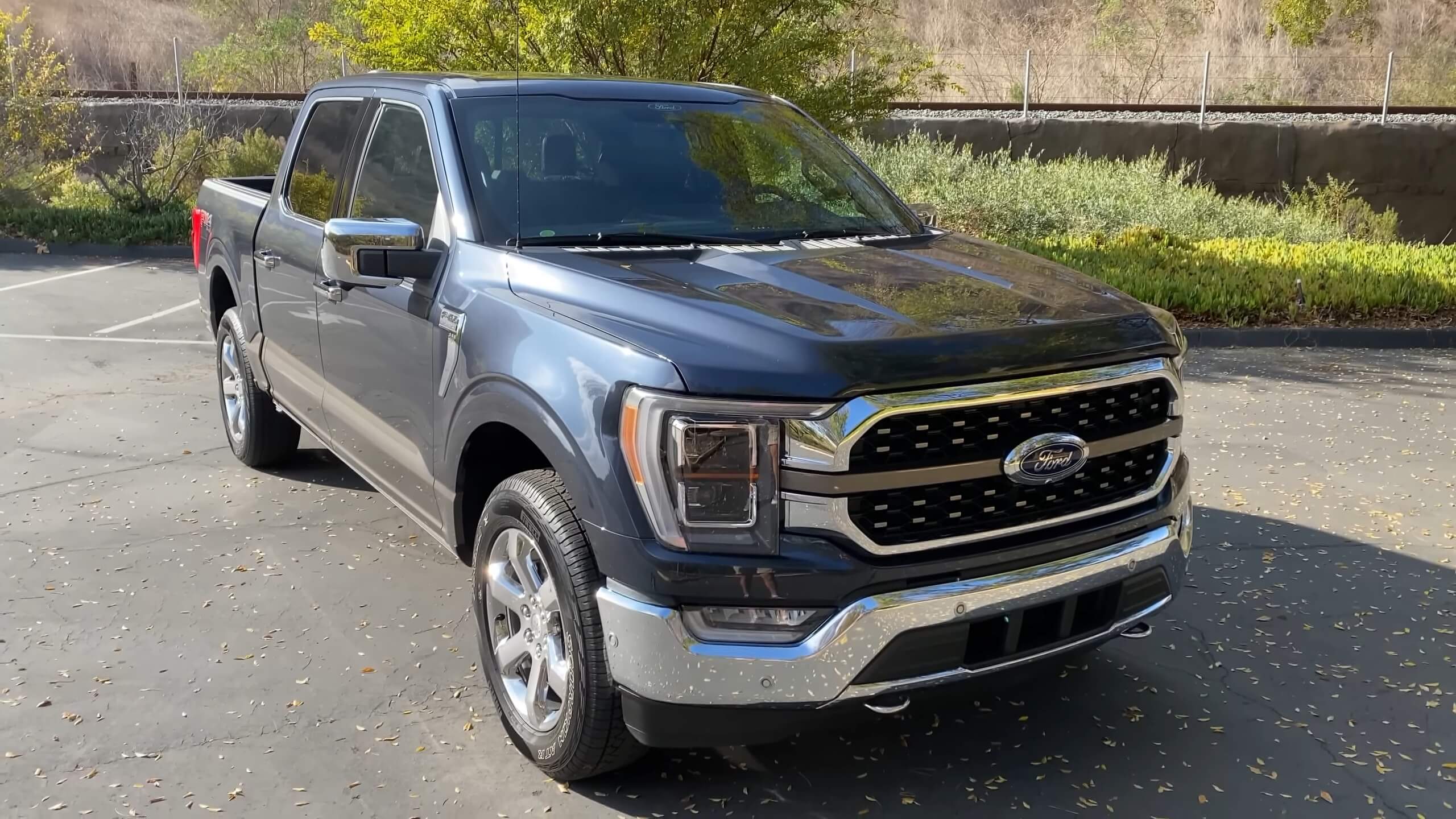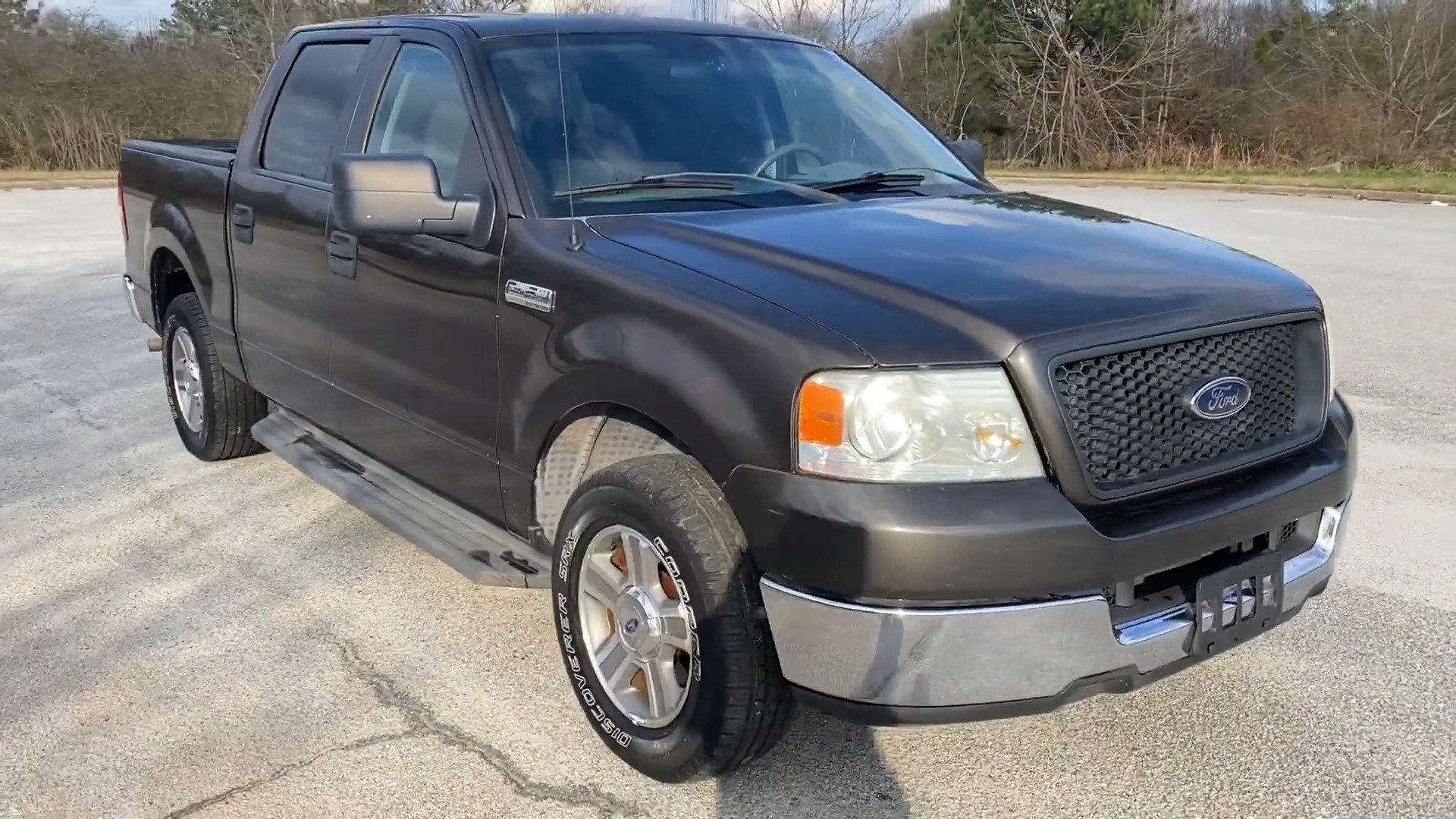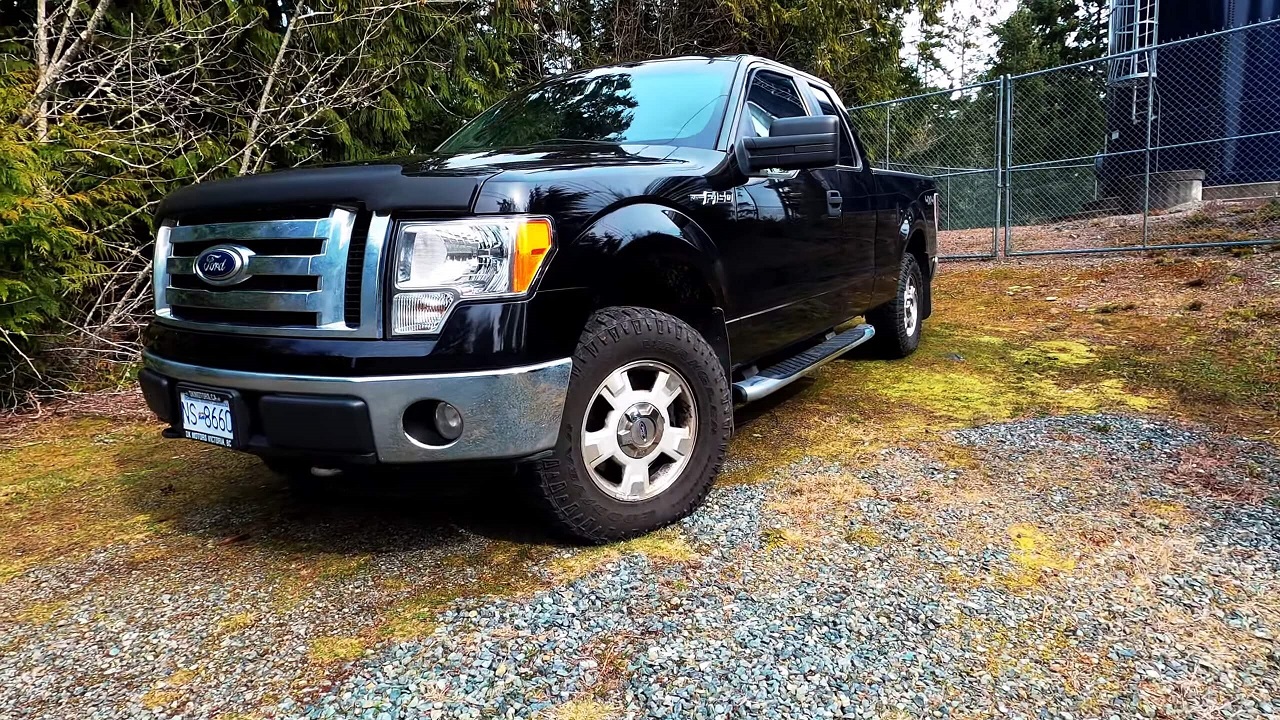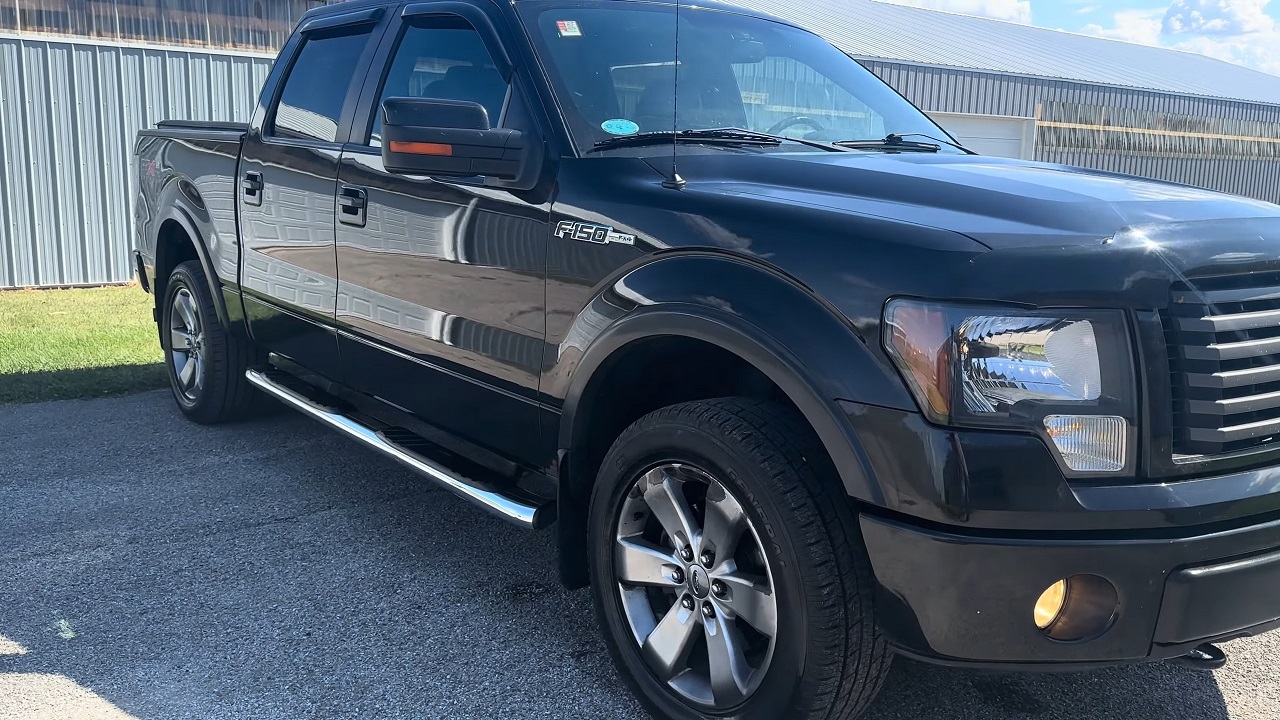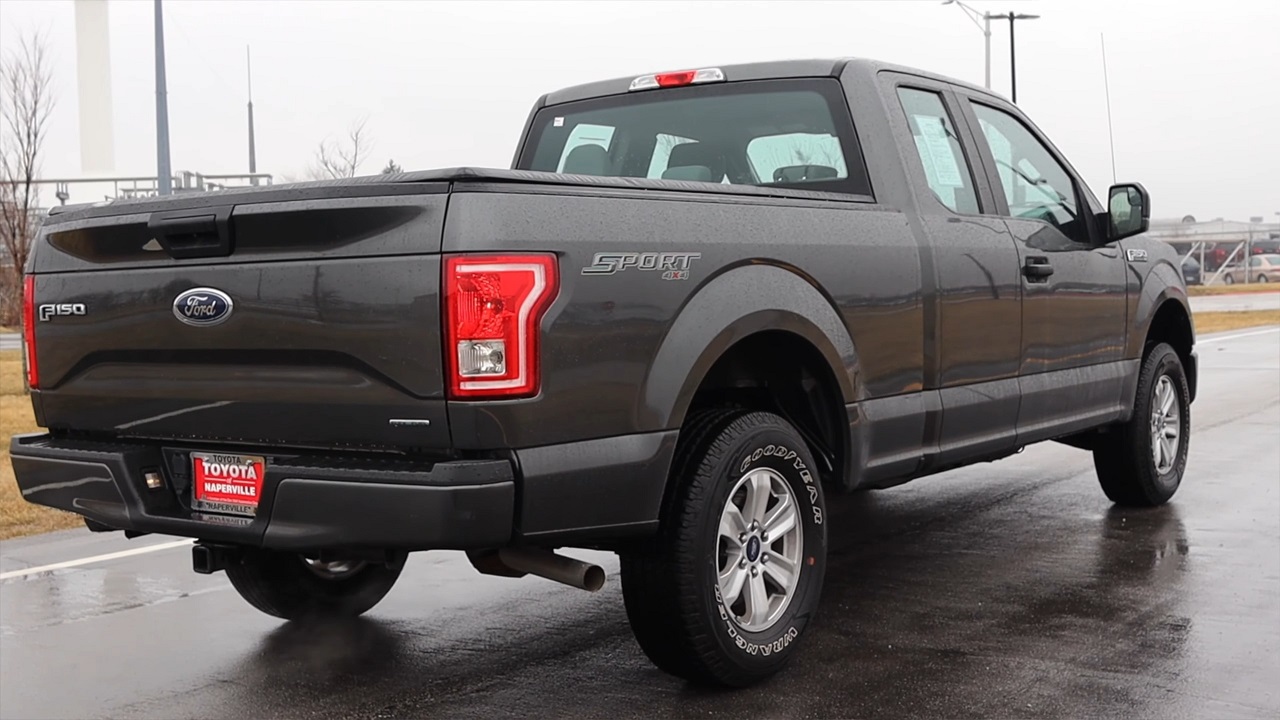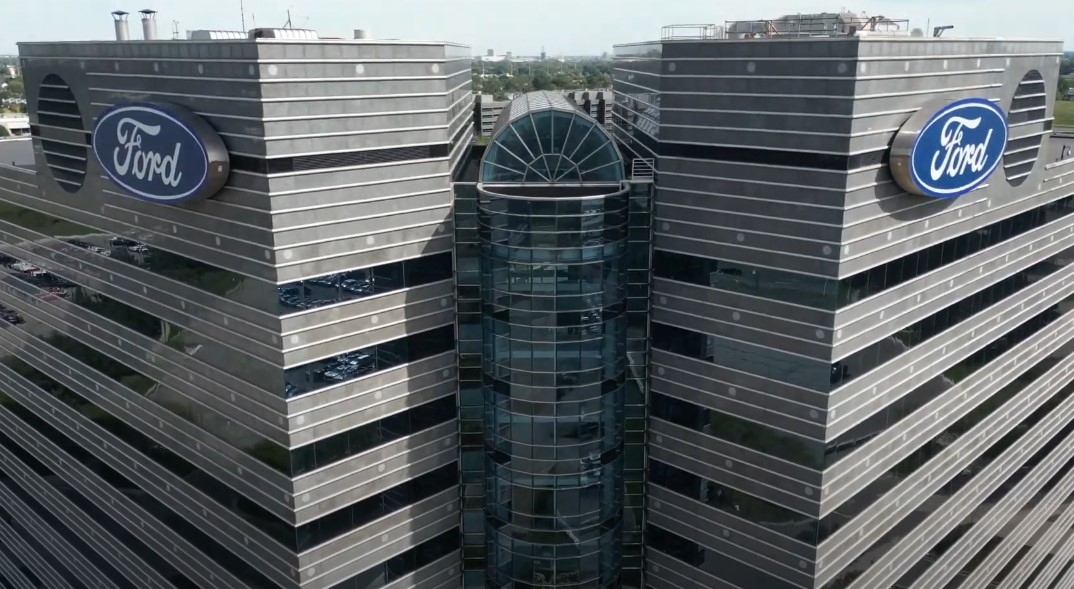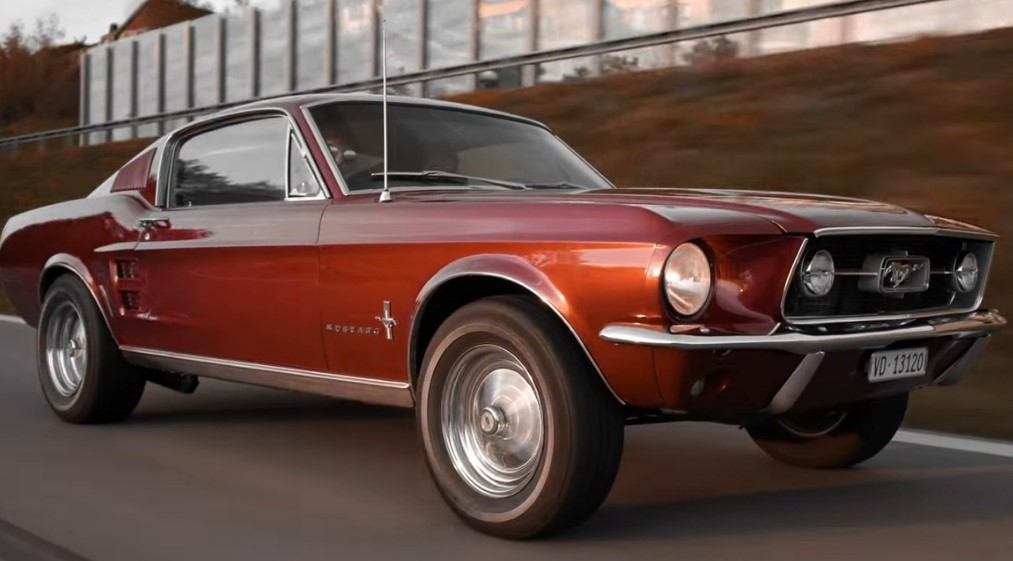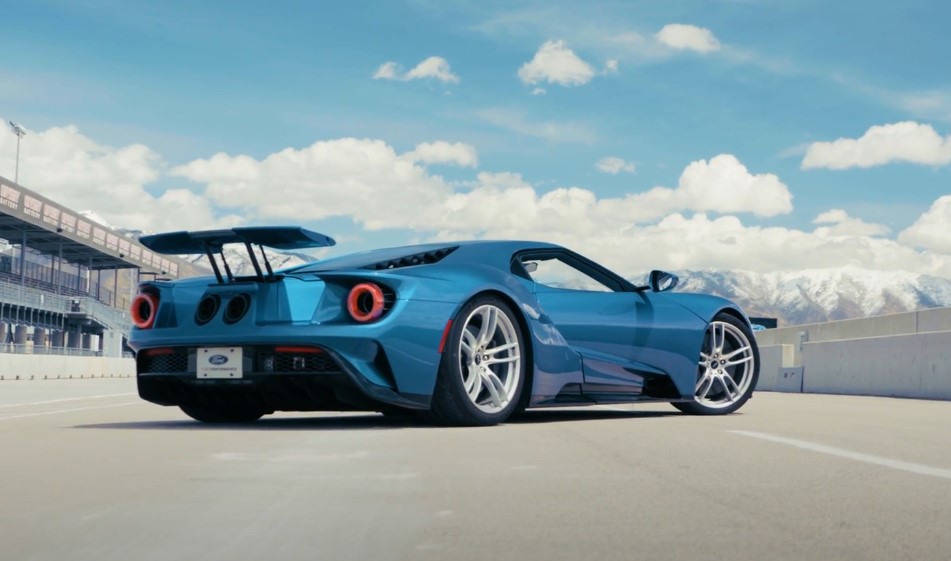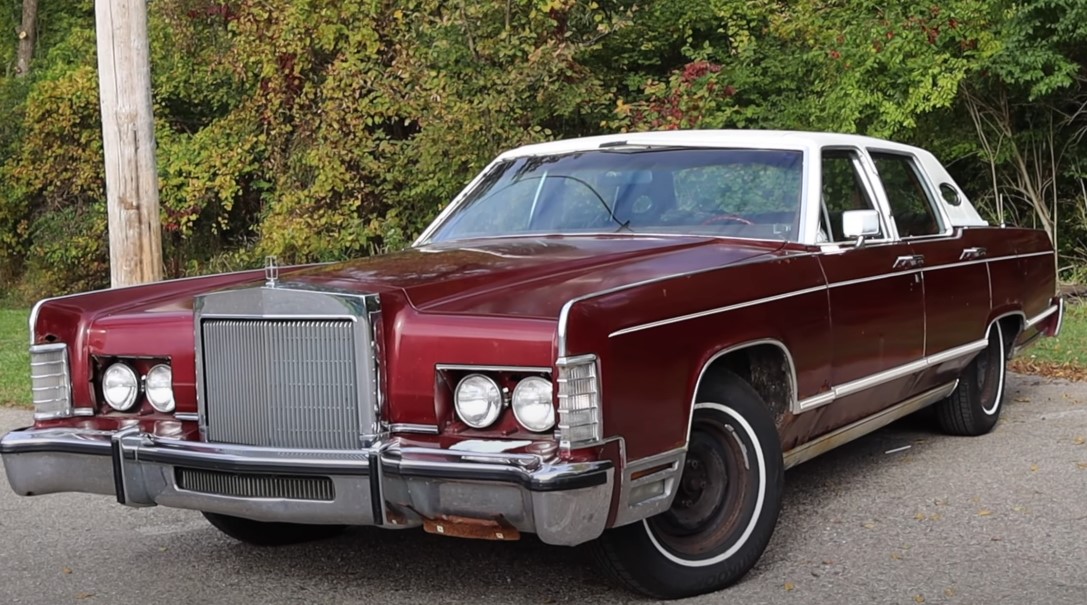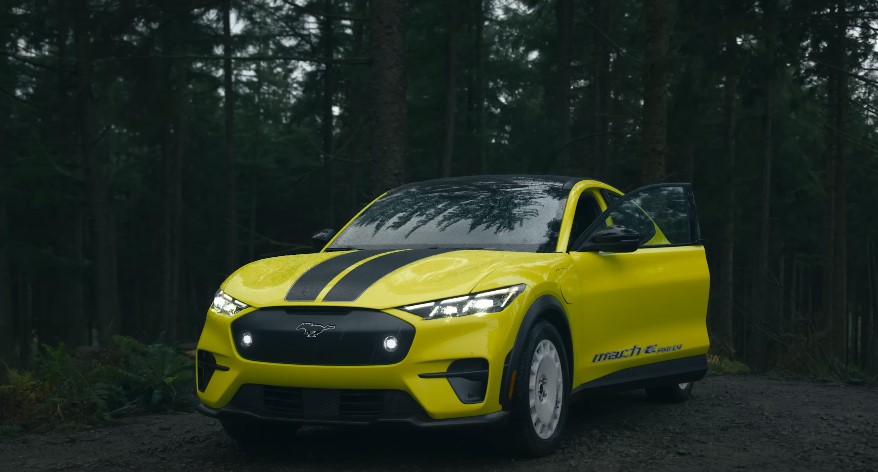The Ford F-150 has been around for decades, with the F Series trucks launching back in 1948.
Today, the lineup includes light, medium, and heavy-duty pickups, but the F-150 remains a consumer favorite.
Ford sells about 103 of these trucks per hour, or roughly two every minute according to autoweek.
If you’re thinking of buying an F-150, you don’t need to spend a fortune on a brand-new model.
Although Ford claims the 2021 model has 92% new parts, the difference between a new and a used F-150 isn’t huge.
That’s why opting for a used F-150 can be a smarter financial choice.
Best Years of the Ford F-150
1997
The 1997 model year brought significant changes to the Ford F-Series, introducing the tenth generation of this iconic American pickup.
| Specification | Detail |
|---|---|
| Engine Type | Gas V8, 4.6L |
| Fuel Economy (City/Highway) | 15 mpg City / 18 mpg Hwy |
| Transmission | 5-speed manual w/OD |
| Passenger Capacity | 3 |
| Drivetrain | Four Wheel Drive |

2003
| Category | Details |
|---|---|
| Engine Type | Gas V8 |
| Engine Size & Output | 5.4 L, 380 hp @ 4,750 rpm, 450 lb-ft @ 3,250 rpm |
| Transmission | 4-speed automatic |
| Fuel Economy | 11/15 MPG (City/Hwy), 13 MPG Combined |
| Drive Type | Rear wheel drive |
| Towing & Payload | Max Towing Capacity: 5,000 lbs., Max Payload: 1,400 lbs. |
| Dimensions | Length: 208 in., Width: 79.1 in., Height: 70.9 in. |
| Seating Capacity | 3 |
| Basic Warranty | 3 years / 36,000 miles |
- Highlights: Marks the end of the tenth generation with significant improvements in performance and durability from the 1997 redesign.
- Key Spec: Available with a range of engine options, including a strong 5.4-liter V8.
- Interesting Fact: Holds a high resale value and is often praised for its longevity and reliability.
This generation featured a new chassis design and updated styling. Ford also separated the lineup into two families, creating the modern “F-Series.”
Among the reliable model years from this era, the 2003 F-150 stands out for its impressive power and performance.
It remains highly rated on KBB and earned the “Seal of Pretty Good” award from CarComplaints.com.
2008
| Trim Family | Features | MSRP Range |
|---|---|---|
| XL | 4.2L V-6 Engine, 5-spd manual transmission, Vinyl Seat trim, 17″ steel wheels | $17,900 – $27,440 |
| STX | Adds: 17″ chrome steel wheels, Cloth seat trim, Front air conditioning, manual | $21,490 – $29,630 |
| XLT | Adds: Keyless entry, Premium cloth seats | $23,910 – $32,050 |
| Lariat | Adds: 5.4L V-8 Engine, Leather seat trim, Heated mirrors, Automatic air conditioning | $30,455 – $33,900 |
| FX4 | Adds: Four-wheel drive, 18″ machined aluminum wheels | $30,600 – $33,750 |
- Highlights: Beginner of 11-th generation, also a redesign year
- Key Spec: The 4.6-liter V8 gets an EPA-estimated 14 mpg in the city and 19 mpg on the highway
- Interesting Fact: Only around 600 complaints and it is rated pretty good!
While the previous generation was highly regarded, the same can’t be said for the eleventh generation of the F-150. The 2004 F-150, a redesign year, is widely considered the worst model.
It suffered from inconsistent performance and serious engine problems like knocking and failure. CarComplaints.com gave it the “Avoid Like the Plague” award, with over 3,000 complaints and 16 recalls.
The 2005 model improved somewhat but still had its share of significant mechanical issues.
Many owners reported loud ticking noises from the engine and frequent transmission failures. Although not as problematic as the 2004 version, the 2005 model is still one to avoid.
The 2008 F-150, however, stands out as a bright spot in this generation. It received a “Pretty Good” rating from CarComplaints.com, with only around 600 complaints and one recall.
2009
The twelfth generation of the F-150 saw a marked improvement with the redesigned 2009 model.
That year, Ford replaced the V6 engine with two V8 options—a 4.6-liter and a 5.4-liter. The new Platinum trim was also introduced, offering a more luxurious interior.
| Category | Details |
|---|---|
| Engine Type | Gas, 4.6 L V8 |
| Transmission | 4-speed automatic |
| Drive Type | Rear wheel drive |
| Total Seating | 3 |
| Fuel Economy (City/Highway/Combined) | 14/19/16 MPG |
| Fuel Tank Capacity | 26.0 gallons |
| Horsepower & Torque | 248 hp @ 4,750 rpm; 294 lb-ft @ 4,000 rpm |
| Towing & Payload Capacity | Max Towing: 5,900 lbs; Max Payload: 1,670 lbs |
| Dimensions (Length x Width x Height) | 213.1 in x 78.9 in x 74.6 in |
| Safety Features | Stability and traction control, 4-wheel ABS, Dual front side-mounted airbags |
| Comfort & Convenience | Cruise control, Front air conditioning, Power windows and locks |
| In-Car Entertainment | AM/FM stereo, 4 speakers, Auxiliary audio input |
| Warranty | Basic: 3 yr./36,000 mi; Drivetrain: 5 yr./60,000 mi |
2012
| Specification | Details |
|---|---|
| Engine Type | Flex-fuel (FFV), 3.7 L V6 |
| Transmission | 6-speed automatic |
| Drive Type | Rear wheel drive |
| Total Seating | 6 |
| Fuel Economy (City/Highway/Combined) | 17/23/19 MPG |
| Towing and Hauling | Max Towing Capacity: 11,300 lbs, Max Payload Capacity: 1,620 lbs |
| Basic Warranty | 3 years / 36,000 miles |
| Dimensions | Length: 231.9 in, Width: 79.2 in, Height: 75.0 in |
| Safety Features | Stability control, Traction control, 4-wheel ABS, Front and rear head airbags |
| Comfort and Convenience | Cruise control, Air conditioning, Power windows and locks |
This table provides a comprehensive overview of the significant attributes of the vehicle, making it
- Highlights: Represents a strong recovery with enhanced styling and engine options after previous problematic years.
- Key Spec: Offered with two V6 and two V8 engines, showcasing versatility and strength.
We all make mistakes, and learning from them is crucial. After the setbacks with the 2011 F-150, Ford took steps to turn things around, producing a stylish, powerful, and reliable 2012 model.
Ford incorporated versatility into the 2012 F-150, offering four engine options (two V6s and two V8s) and nine unique trims, giving buyers a broad range of customization options. Their efforts paid off, helping them outshine competitors like the Toyota Tacoma.
If you’re searching for one of the most reliable F-150s, the 2012 model is definitely worth considering.
2013, 2014
| Engine Options | 3.7L V6 | 5.0L V8 | 6.2L V8 | 3.5L EcoBoost V6 |
|---|---|---|---|---|
| Valvetrain | Ti-VCT DOHC | Ti-VCT DOHC | iVCT SOHC | Ti-VCT DOHC |
| Displacement | 226 cu. in. | 302 cu. in. | 379 cu. in. | 214 cu. in. |
| Horsepower | 302 @ 6,500 rpm | 360 @ 5,500 rpm | 411 @ 5,500 rpm | 365 @ 5,000 rpm |
| Torque | 278 lb-ft | 380 lb-ft | 434 lb-ft | 420 lb-ft |
| Fuel Economy (City/Hwy) | 17/23 MPG | 15/21 MPG | 13/18 MPG | 16/22 MPG |
| Transmission | 6-speed auto | 6-speed auto | 6-speed auto | 6-speed auto |
- Highlights: These years are known for their reliability and range of powerful engine options.
- Key Spec: The 2014 model included the 3.5-liter EcoBoost V6, offering a balance of power and fuel efficiency.
- Interesting Fact: Had 6 recalls and over 100 complaints, these models maintained strong sales and customer satisfaction.
However, the 2013 and 2014 models are considered among the most reliable, thanks to a range of engines, like the 411-hp 6.2-liter V8 and the 365-hp 3.5-liter EcoBoost V6.
The 2014 F-150, in particular, earned a “Pretty Good” rating from CarComplaints.com despite six recalls and over 1,000 complaints.
2015, 2017, 2019, 2020
- Highlights: These years are known for their redesigned body.
- Key Spec: The 2020 model had a 10-speed automatic transmission.
- Interesting Fact: Even if it is one of the most reliable Consumer Reports rated it 3 out of 5.
The 2015 F-150 was a redesign year, introducing an aluminum body that shaved off 700 pounds to improve fuel economy.
Owners report getting around 18 mpg. However, its reliability was rated 3.0 out of 5.0 by Consumer Reports, and it had 16 recalls, which can be a dealbreaker for some buyers.
From 2017 onwards, the F-150 models are generally seen as reliable choices.
The 2019 model is also a standout, with strong reviews from critics and owners, making it worth spending a bit more for a newer, reliable truck.
The 2020 model is another solid option, offering six different engines, each paired with a 10-speed automatic transmission.
| Category | Specification |
|---|---|
| Engine | V6 Flex Fuel 3.3 Liter |
| Power Output | 290 hp @ 6,500 rpm, 265 lb-ft @ 4,000 rpm |
| Transmission | SelectShift® 6 Speed Automatic with Manual Mode (6R80E) |
| Fuel Economy | 14 MPG city / 19 MPG highway |
| Dimensions | Length: 209.3 in, Width: 79.9 in, Height: 75.5 in, Wheelbase: 122.4 in |
| Capacities | Fuel: 23.0 gal, Cargo: 12.9 cu-ft, Towing: 1,500/9,200 lb, Payload: 1,990 lb |
This trim also offers various packages such as the Equipment Group 101A, Trailer Tow Package, and
2021-Present
The 14th-generation Ford F-150 stands as the most rugged and capable truck in Ford’s lineup. It’s currently the most powerful light-duty full-size pickup truck on the market, maintaining the high standards that customers expect from Ford’s flagship model.
It’s not only built for the County Sheriff but also suits the family man who enjoys the countryside lifestyle. With impressive torque, towing capacity, horsepower, and payload, it’s among the best in its class.
The 14th-gen F-150 offers modern connected vehicle features like over-the-air updates and comes equipped with the advanced 3.5-liter PowerBoost hybrid powertrain. This innovative engine includes Pro Power Onboard, an integrated generator that adds extra utility for everyday tasks.
The Worst Years of the Ford F-150
2005
- Why worst: Continues to struggle with unresolved issues from earlier models, introducing new problems like rear window leaks.
- Key Spec: Similar mechanical features to other eleventh-generation models but with increased unreliability.
- Interesting Fact: 14 recalls, making it one of the riskier years for potential buyers.
The 2005 Ford F-150 was another challenging year for the model and its owners.
This model didn’t resolve the issues of previous years and even introduced new ones, like rear window leaks.
According to Consumer Reports, the 2005 F-150 had 14 recalls, with most involving the lighting, fuel system, brakes, and airbags.
Issues with any of these systems can pose serious safety risks, so it’s best to steer clear of the 2005 F-150 if you don’t want constant worry while driving
2010
- Why worst: Known for significant transmission issues and high repair costs.
- Key Spec: Notable for its fuel economy at the time but overshadowed by mechanical failures.
- Interesting Fact: Repair costs up to 4000$.
The 2010 F-150 is a model that likely still causes Ford some anxiety. While it’s known for good fuel economy and impressive towing capacity (5,100 to 11,300 lbs), this model year was riddled with issues.
Transmission problems, originating from the driveshaft and transmission wiring harness, typically began around 15,000 miles and could cost anywhere from $150 to $4,000 to fix. Additionally, many owners reported issues with the power windows, which often malfunctioned due to electrical system flaws.
With these transmission and electrical problems, the 2010 F-150 remains a model year to avoid.
2011
- Why worst: Engine stalls, misfires, and failures, and many models developed steering problems
- Interesting Fact: 6 recalls and over 1900 complaints.
The 2011 F-150 offered four unique engines, with the most powerful being the 6.2-liter V8 delivering 414 horsepower and 434 lb-ft of torque, paired with a six-speed automatic transmission. Despite initial excitement, the 2011 model faced significant issues after its release.
According to the NHTSA, this model year had six recalls and 1,944 complaints, with 655 related specifically to the powertrain. The 2011 F-150 experienced engine stalls, misfires, and failures, and many models developed steering problems after accumulating several thousand miles. If you don’t want to spend more time at the mechanic than on the road, it’s best to steer clear of the 2011 F-150.
2016
- Why worst: Engine stalls, misfires, and failures, and many models developed steering problems
- Interesting Fact: Introduced with Ford’s “built Ford tough”, and it was anything but tough.
The 2016 F-150 was introduced with Ford’s “built Ford tough” mantra but had a glaring weakness: engine stalls.
Many owners reported this problem around the 29,000 to 30,000-mile mark. Additionally, the truck was plagued by door latch issues, causing doors to open unexpectedly while driving or after side impacts.
Alongside problems with airbags, seats, suspension, and brakes, these issues led to 13 recalls. If you’ve been considering a 2016 F-150, it’s best to remove it from your list.
2018
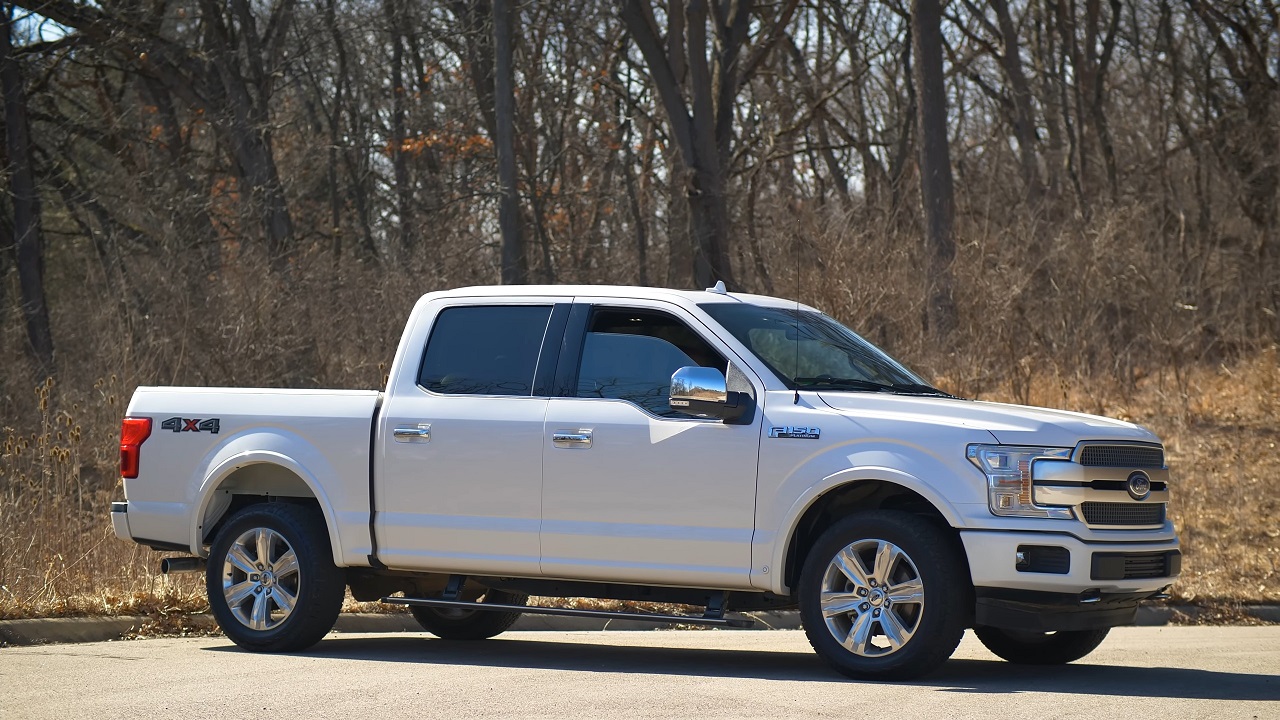
- Why worst: Infamous for its “shifting hard” transmission problems, leading to high repair expenses.
- Key Spec: Continued with varied engine offerings but plagued by transmission failures.
- Interesting Fact: Transmission repair costs could reach up to $7,000, and 2 million recalls.
CarComplaints flags the 2018 Ford F-150 as problematic due to the high cost of repairs and the fact that issues arise at low mileage.
The most significant issue is “shifting hard,” which can cost up to $7,000 to fix and typically shows up around 15,000 miles. Suspension problems occur early too, sometimes at just 5,000 miles, costing around $700 to repair.
Complaints About Pedals and Seat Belt Mechanism (2 million trucks had been recalled)
Another common complaint is a soft brake pedal, which can also emerge at around 5,000 miles and cost about $800 to fix. When searching for a used Ford F-150, be aware of potential repair costs with this model year. It’s best to avoid potential lemons.
That year Ford recalled 2 million F-150 pickup trucks in North America because a seat belt mechanism started fires years that were affected were 2015-2018.
What owners of the Ford F-150 like to use their car for:
The Ford F-150 is an adaptable vehicle with diverse uses for its owners. Here is a summary of the most frequent use categories and their respective usefulness ratings according to fixdapp.com
| Usage Category | Usefulness (Out of 5 Stars) |
|---|---|
| Lots of Driving (travel/long commute) | ★★★★★ |
| Family Vehicle | ★★★★ |
| Sport/Fast Driving | ★★★ |
| Luxurious Driving | ★★★ |
| Outdoor/Off-Road | ★★★ |
| Office on Wheels | ★★★ |
| Hauling/Towing | ★★★ |
Fun Facts About Ford
Family Business
Ford is one of the largest family-owned businesses in the world. Since its founding, the company has maintained strong family ties. Henry Ford, the founder, ensured his legacy continued through his descendants.
Notably, all of the company’s CEOs have been directly related to Henry Ford, with William Clay Ford Jr. currently serving as the executive chairman. This unique aspect of Ford’s corporate governance has contributed to its long-term vision and stability.
First Vehicle
Henry Ford’s first vehicle, the Ford Quadricycle, was built in 1896. This early automobile had four bicycle wheels and a simple frame, powered by a small gasoline engine.
The Quadricycle’s success demonstrated the potential of gasoline-powered vehicles, leading Ford to pursue larger-scale production, ultimately resulting in the founding of the Ford Motor Company in 1903.
Assembly Line
Ford revolutionized the automobile industry by introducing the assembly line in 1913. This innovation drastically reduced the time it took to build a car from over 12 hours to just 90 minutes.
The assembly line not only increased production efficiency but also lowered costs, making cars more affordable for the average person and setting a new standard for manufacturing industries worldwide.
Model T
The Model T, nicknamed “Tin Lizzie,” was introduced in 1908 and became one of the best-selling vehicles of all time, with 15 million units sold before production ceased in 1927.
Its affordability, durability, and ease of maintenance made it a favorite among consumers, revolutionizing personal transportation and solidifying Ford’s reputation as a leading automaker.
Mustang Popularity
Introduced in 1964, the Ford Mustang became an instant hit and remains one of the most iconic muscle cars in history.
Its sleek design, powerful performance, and affordability captured the imagination of car enthusiasts. The Mustang’s popularity has endured for decades, as it became a symbol of American automotive culture.
War Efforts
During World War I, Ford contributed to the war effort by starting the Ford Airplane Company. The company produced the Liberty Engine, a significant powerplant for various aircraft used by the Allies.
Ford’s involvement in the war effort extended its influence beyond automobiles, showcasing its manufacturing capabilities and patriotic commitment.
Edison Connection
Henry Ford and Thomas Edison were good friends. Edison’s last breath is reportedly contained in a test tube at the Henry Ford Museum.
This unique keepsake symbolizes the deep friendship and mutual respect between the two inventors. Their collaboration and shared vision for technological innovation left a lasting impact on modern industry.
Fordlandia
Ford attempted to create a rubber plantation city called Fordlandia in Brazil to secure a supply of rubber for his cars. Established in 1928, Fordlandia aimed to produce rubber domestically, reducing reliance on foreign sources.
However, the venture faced numerous challenges, including unsuitable soil and climate conditions, and it was ultimately abandoned in 1934.
F-Series
The Ford F-Series has been the best-selling truck in America for over four decades. Since its introduction in 1948, the F-Series has built a reputation for reliability, performance, and versatility.
Its enduring popularity underscores Ford’s leadership in the truck market and its ability to adapt to evolving consumer needs.
First Moving Assembly Line
Ford introduced the world’s first moving assembly line for cars in 1913, a game-changer for manufacturing. This innovation allowed for continuous production, significantly boosting efficiency and output.
The moving assembly line became a cornerstone of modern manufacturing processes, influencing industries beyond automotive production.
Ford GT
The Ford GT supercar was designed to compete with Ferrari at Le Mans, which it successfully did, winning multiple times. The original GT40, introduced in the 1960s, was Ford’s answer to Ferrari’s dominance in endurance racing.
The GT40’s victories at Le Mans, including a historic 1-2-3 finish in 1966, cemented Ford’s legacy in motorsport.
EcoBoost Engines
Ford’s EcoBoost engines combine turbocharging and direct injection to deliver performance with better fuel efficiency.
Introduced in 2009, EcoBoost technology has been widely adopted across Ford’s lineup, offering a balance of power and environmental responsibility.
These engines have contributed to improved fuel economy and reduced emissions in Ford vehicles.
Mustang II
The Mustang II, introduced in 1974, was a major redesign that downsized the car in response to the 1973 oil crisis. This second-generation Mustang aimed to offer better fuel efficiency and affordability.
While it received mixed reviews from enthusiasts, the Mustang II played a crucial role in maintaining the model’s relevance during a challenging economic period.
First Mass-Produced Car
Ford was the first company to mass-produce affordable vehicles, making cars accessible to the general public.
The Model T, in particular, exemplified this approach, transforming the automobile from a luxury item to a practical mode of transportation for millions. Ford’s mass production techniques set the stage for the modern automotive industry.
Lincoln Acquisition
Ford acquired the Lincoln Motor Company in 1922, which became their luxury vehicle division. Lincoln’s inclusion allowed Ford to expand its market presence and compete in the luxury car segment.
Over the years, Lincoln has developed a reputation for elegance, innovation, and premium quality, contributing to Ford’s overall brand portfolio.
Racing History
Ford has a storied history in racing, including winning the 24 Hours of Le Mans with the Ford GT40. Ford’s involvement in motorsports extends to various disciplines, from endurance racing to rallying.
These achievements have displayed Ford’s engineering prowess and competitive spirit, which further improved the brand’s performance-oriented image.
Ford Explorer
The Ford Explorer, introduced in 1990, was one of the vehicles that popularized the SUV segment. Its combination of rugged capability, family-friendly design, and advanced features made it a top choice for consumers.
The Explorer’s success helped establish the SUV as a dominant vehicle category in the automotive market.
Electric Vehicles
Ford is investing heavily in electric vehicles, with models like the Mustang Mach-E and the upcoming F-150 Lightning. These initiatives reflect Ford’s commitment to sustainability and innovation in response to growing environmental concerns.
The Mustang Mach-E, in particular, has garnered attention for its performance and modern design, signaling Ford’s direction in the electric vehicle market.
Bronco Revival
The Ford Bronco, a beloved SUV discontinued in 1996, was revived in 2020 to much fanfare. The new Bronco combines modern technology with the rugged, off-road capabilities that made the original a favorite.
Its return has sparked enthusiasm among automotive enthusiasts and marked a successful reentry into the competitive SUV market.
Green Initiatives
Ford is committed to sustainability, with initiatives to use renewable materials and reduce their environmental footprint.
Efforts include the use of recycled materials in vehicle production, advancements in fuel efficiency, and the development of electric and hybrid models.
These green initiatives align with global trends toward more environmentally friendly transportation solutions.

